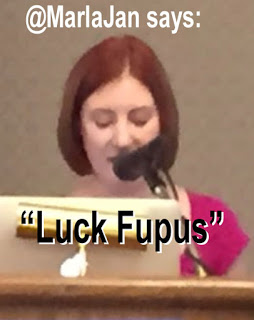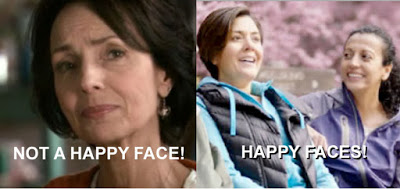I attended ExL Pharma’s ePatient Connections conference (#ePatCon on Twitter) in Philadelphia this past Thursday and met a few interesting people. Although some pundits doubt the usefulness of these conferences, it’s always good to get out of the box of your office and talk to people – you might learn something. Let me share what I learned.
A majority of the ePatients attending were presenters sponsored by my friends at WEGO Health who paid their expenses. WEGO Health funds its support for its Health Activist community through transparent, community-vetted advertising and sponsorships from health companies: research, content development, education, events, conferences, distribution programs, ad networks and more.
Every ePatient I spoke to at the conference wants a pharmaceutical company to hire him or her. As one person told me, “I want to turn my avocation into a vocation.” That person has a Twitter account (@tvsoccerdad) with less than a thousand followers. Other ePatients boast of having a few thousand followers on Twitter. But it’s their experience and passion that really qualifies them as paid consultants to pharma.
Indeed, many ePatient tweeters and bloggers are being paid by pharma. One example is the German MS patient blogger/journalist I wrote about some time ago who contributes articles to “Living Like You,” a Novartis Pharma AG website. The problem is, most of the time these ePatients do not reveal the nature of their relationship with pharma (read “Transparency is Good in Theory, But Not in Practice“).
What other ways can ePatients work with pharma?
Some ePatients suggested they be hired to participate in market research to help pharma create more realistic Direct-to-Consumer (DTC) product ads and other communications targeted at patients like themselves.
Most ePatients at the conference (e.g., @MarlaJan) had harrowing stories to tell and these real stories are nothing like the fictional patient stories that win Lions Health “Festival” advertising prizes (see here). As one ePatient put it – “enough with the happy faces!”
Actually some drug ads have shown unhappy patients as in the 2008 Lyrica TV ad (left side of image below). These days, however, Pfizer is showing more happy faces on the Lyrica website (right side of image below).
Pharma marketers have experimented with real life patient stories that do not register as “happy” (see, for example, “Innerstate Private Screening“). I think, however, that most pharma marketers would agree that “Happy” — at least a happy ending — sells drugs. Hence, happy fictional patient stories win first-place grand prizes and real patient stories win only third-place prizes.
At least one ePatient mentioned being invited by a drug company to participate in a patient blogger “summit” probably at some resort location. I wrote about this before. Allison Blass (Patient Blogger, WEGO Health Diabetes Activist), for example, attended a “Diabetes Social Media Summit” sponsored by Roche in Orlando, Florida. Allison came away from that Summit feeling much closer to Roche and now has a more personal relationship with “Todd,” one of the Roche Summit organizers who was communicating with Allison before the event (read “Some Social Media Patient Opinion Leaders Want to be Paid Pharma Professionals“).
That was back in 2010. So, pharma companies have been working with and hiring ePatients for quite some time. In addition to the cases mentioned above, real patients and their stories routinely are featured in DTC ads and product websites. The problem is that not ALL ePatients can be hired by pharma.
Another way that drug companies support ePatients is by hosting in-person “town meetings” such as the one mentioned by Jeff Folloder from PatientPower.info. He talked about the March 29, 2015, “Living Well with CLL: A Town Meeting for Patients, Their Families and Care Partners.” CLL stands Chronic Lymphocytic Leukemia. The audience consisted of CLL patients and their caregivers who heard about emerging therapies in CLL, current treatment options and support resources. It was sponsored by the Patient Empowerment Network, which received educational grants from AbbVie and Genentech. It was produced in partnership with Banner MD Anderson Cancer Center, CLL Global Research Foundation, and the Leukemia & Lymphoma Society.
Sounds like Continuing Medical Education for patients!
NOTE: This meeting might have qualified to display the “Patients Included” logo. For more on that, read “The Patients Included Movement.”
All this suggests that the pharmaceutical industry is applying its physician marketing tactics to influence patients. This was specifically the analogy mentioned by Anne C. Beal, MD, MPH, Chief Patient Officer, Sanofi. In a Pharma Marketing Talk podcast interview, Beal compared the roles of Chief Medical Officer and Chief Patient Officer:
“Quite simply, the job of the Chief Medical Officer is to help us manage our relationships with our medical colleagues. The job of the Chief Patient Officer is to help manage our relationships with our patients. The Chief Medical Officer works on ways to engage and outreach to the medical community, whereas the Chief Patient Officer thinks about how to engage and outreach to the patient community.”
Of course, the pharma industry does not consider this marketing. It’s called “Patient Centricity.” Although the drug industry says transactions with patients are “transparent,” it is easy to find cases where it’s more murky than transparent. Eventually, these activities may generate the same scrutiny from ethicists and lawmakers as did pharma-sponsored CME and payments to physicians.
IMHO, as I mentioned before (here for example), the drug industry should be more pro-active and develop voluntary guidelines for its patient engagement activities.
#ePatCon Tweets !function(d,s,id){var js,fjs=d.getElementsByTagName(s)[0],p=/^http:/.test(d.location)?’http’:’https’;if(!d.getElementById(id)){js=d.createElement(s);js.id=id;js.src=p+”://platform.twitter.com/widgets.js”;fjs.parentNode.insertBefore(js,fjs);}}(document,”script”,”twitter-wjs”);










![6 Digital Tools at the Center of Healthcare Digitalization [INFOGRAPHIC]](http://ec2-54-175-84-28.compute-1.amazonaws.com/pharma-mkting.com/wp-content/uploads/2021/04/6DigitalTools_600px-100x70.jpg)




